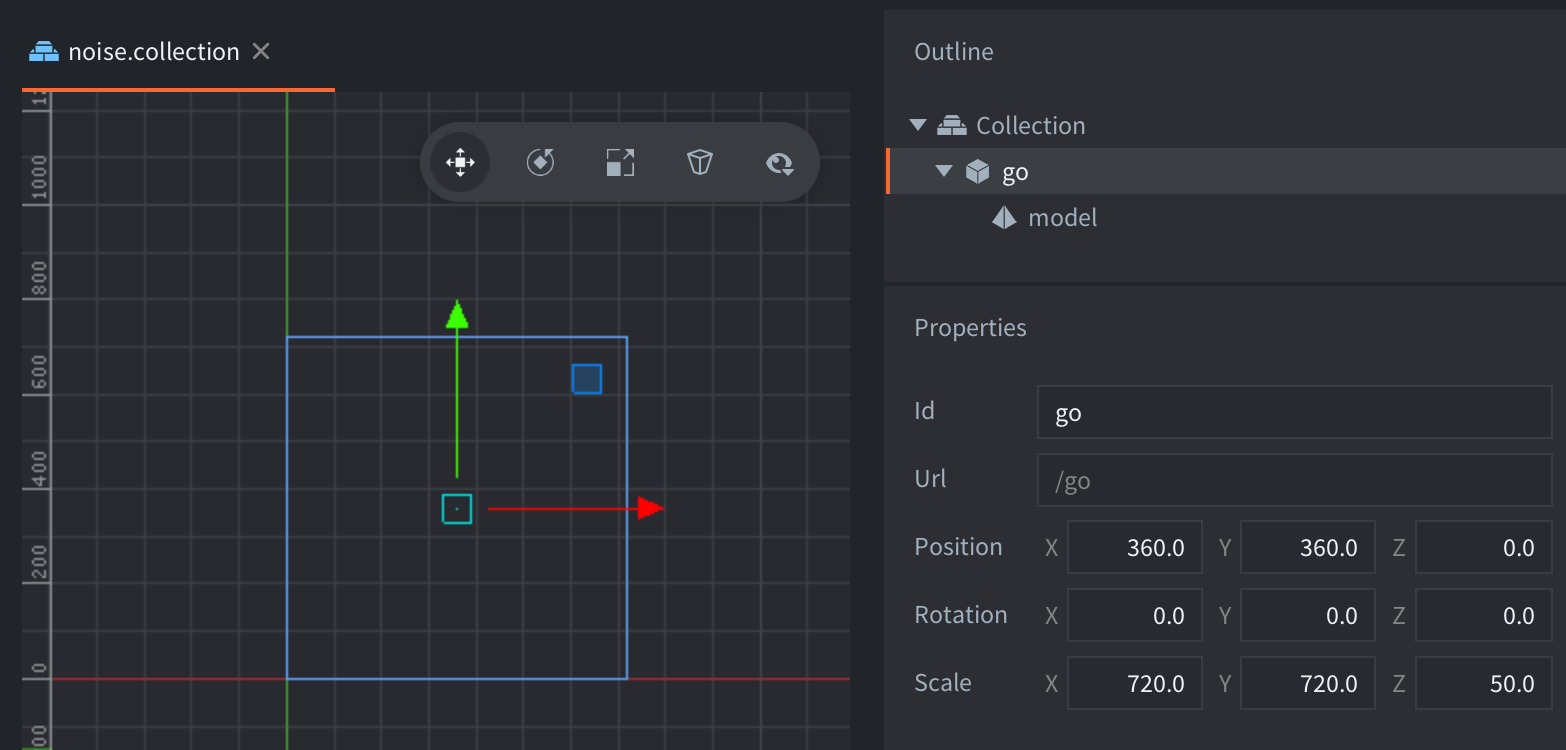Noise shader
Setup
This example contains a game object with a model component. The model component uses the /builtins/assets/meshes/quad.dae mesh, which is a rectangle 1 by 1 unit large. The game object is scaled to the dimensions of the screen so that the mesh covers the entire screen.

The shader applies multiple layers of noise to the uv coordinate to create a two dimensional flowing cloud or smoke like look. The shader also receives a time value from noise.script and applies this in the calculation to apply movement to the visual effect.
Scripts
noise.script
function init(self)
self.time = 0
end
function update(self, dt)
self.time = self.time + dt
-- set the x component of the 'time' fragment constant in the material
go.set("#model", "time.x", self.time)
endnoise.fp
#version 140
in mediump vec2 var_texcoord0;
uniform fs_uniforms
{
mediump vec4 time;
};
out mediump vec4 out_fragColor;
// noise shader from https://www.shadertoy.com/view/XXBcDz
// pseudo random generator (white noise)
float rand(vec2 n)
{
return fract(sin(dot(n, vec2(12.9898, 78.233))) * 43758.5453);
}
// value noise
float noise(vec2 p)
{
vec2 ip = floor(p);
vec2 u = fract(p);
u = u * u * (3.0 - 2.0 * u);
float x = mix(rand(ip), rand(ip + vec2(1.0, 0.0)), u.x);
float y = mix(rand(ip + vec2(0.0, 1.0)), rand(ip + vec2(1.0, 1.0)), u.x);
float a = u.y;
float res = mix(x, y, a);
return res * res;
}
// used to rotate domain of noise function
const mat2 rot = mat2( 0.80, 0.60, -0.60, 0.80 );
// fast implementation
float fbm( vec2 p )
{
float f = 0.0;
f += 0.500000 * noise( p ); p = rot * p * 2.02;
f += 0.031250 * noise( p ); p = rot * p * 2.01;
f += 0.250000 * noise( p ); p = rot * p * 2.03;
f += 0.125000 * noise( p + 0.1 * sin(time.x) + 0.8 * time.x ); p = rot * p * 2.01;
f += 0.062500 * noise( p + 0.3 * sin(time.x) ); p = rot * p * 2.04;
f += 0.015625 * noise( p );
return f / 0.96875;
}
void main()
{
float n = fbm(var_texcoord0.xy);
out_fragColor = vec4(n, n, n, 1.0);
}